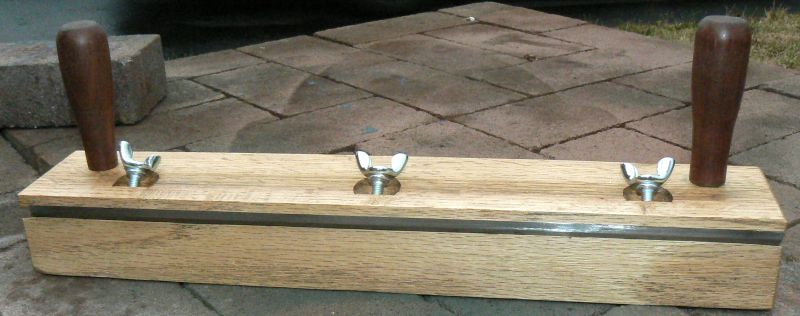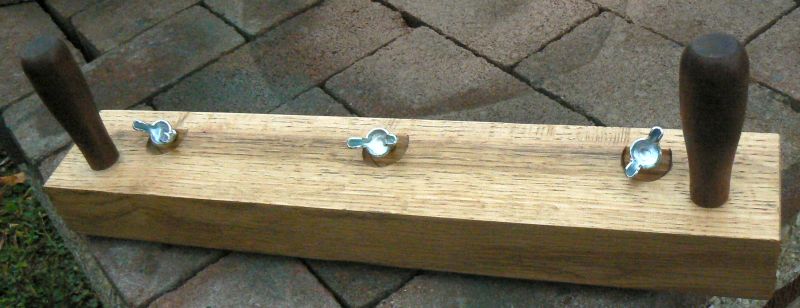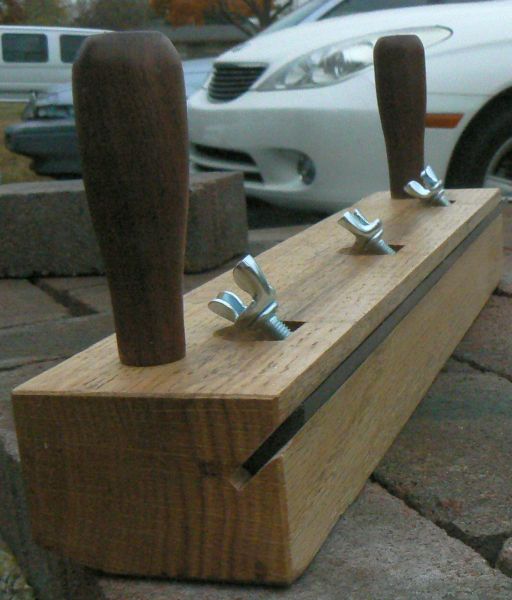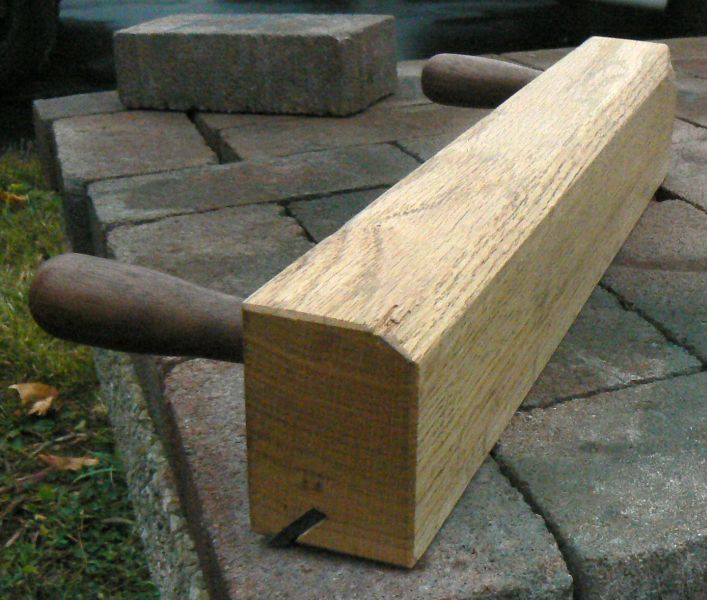Page 3 of 4
Posted: Thu Oct 21, 2010 4:22 pm
by easterngray
Ok - my next project will be the finger-lap joint jig miter gauge extension as depicted on page 88 of the 1984 revised edition of PTWFE. It is also found on page 48 of the 1955 edition. Alec
Posted: Thu Oct 21, 2010 7:51 pm
by shipwright
Nice guard Alec. If I'd had one of those when I was restoring my 10ER I wouldn't have had those steel whiskers from the wire wheel. Boy are they hard on your razor.
Paul M
Posted: Fri Oct 22, 2010 4:00 am
by navycop
easterngray wrote:the 1984 revised edition of PTWFE. It is also found on page 48 of the 1955 edition. Alec
Do you have all these old editions? Or do you get them from the internet?
Posted: Fri Oct 22, 2010 6:42 am
by easterngray
Yes - I have several editions. They are usually available on ebay or from online bookdealers. Alec
Blade holder
Posted: Wed Nov 03, 2010 2:21 pm
by JPG
Do not know if this or something similar is in PTWFE, but is is a jig.
Although I had previously make a crude holder to sharpen jointer blades, my recent acquisition of a planer made a more concise/ridgid version necessary. It closely resembles the ss alum version(so much for originality).
It is made from a piece of white oak firewood that I picked up after noticing the fine straightness of the grain.(too good to use for warmth or atmosphere:eek:). The handles are black walnut turned from a cutoff scrap.

- blade holder 5.jpg (73.09 KiB) Viewed 4941 times

- blade holder 2.jpg (74.09 KiB) Viewed 4938 times

- blade holder 3.jpg (71.65 KiB) Viewed 4937 times

- blade holder 4.jpg (100.59 KiB) Viewed 4940 times
The blade slot is cut to a 45. When used, the table is set to -1 degree.(hindsight would suggest cutting the 45 to 46(or 44) to begin with) That with the 3+- degree conical disk angle yields a 43 degree bevel on the blade(that is what was the original angle as received). The PO indicated he had never had them ground.
Although I do not have one, a micro adjustable collar to lower the table incrementally would be an advantage. That would allow increasing the grind depth by lowering the table(and blade) further into the lower portion of the taper on the disk.
It is convenient to act as a holder for honing as well.
The rough corners are there since I did not dress them out fully when jointing them out of the firewood. They are in a non-functional area and I did not want to reduce its size further.
The chamfer was included to eliminate any debris interference.(probably unneeded).
Posted: Fri Dec 03, 2010 7:40 am
by tdubnik
In my neverending quest to fight dust and chips I came up with this to hold a flexible stay put dust collection hose. I had previously tried various methods (wire, tape or clamps) to hold the hose. They didn't work very well so it was time to do something a little more stable.
It worked great when I was drilling out the waste for router trays capturing about 95% of the chips generated. It can also be clamped to other tools such as the oscillating sander to catch the dust that escapes from the built in port. I also clamp it to my workbench when I use my dremel tool. While not 100% there is a noticable improvement.
[ATTACH]11100[/ATTACH]
[ATTACH]11101[/ATTACH]
[ATTACH]11102[/ATTACH]
Posted: Fri Dec 03, 2010 9:44 am
by easterngray
Those are both great! I am laid up with a shoulder injury and can't get to the finger joint jig. Hopefully I'll recover before the shop is too cold to work in. Alec
Awesome Wheel Guard
Posted: Fri Dec 03, 2010 11:14 am
by ddvann79
Alec,
Great job on the wheel guard. That looks to be some excellent joinery and a very handy accessory. Why so wide? I noticed your auxiliary feather board fence still wasn't finished. I found several coats of standard poly smoothed out with fine steel wool makes a very slick surface that resists becoming tacky against the skin. But it also changes the dimensions of the work surface.
Posted: Fri Dec 03, 2010 11:44 am
by JPG
ddvann79 wrote:Alec,
Great job on the wheel guard. That looks to be some excellent joinery and a very handy accessory. Why so wide? I noticed your auxiliary feather board fence still wasn't finished. I found several coats of standard poly smoothed out with fine steel wool makes a very slick surface that resists becoming tacky against the skin. But it also changes the dimensions of the work surface.
I have found paste finishing wax(minwax) to be an excellent covering. It is slightly 'stiffer' than JPW and still provides the 'slick' when buffed.
FWIW I bought it by mistake(the can be yellow!). Use it whenever I can.(too 'frugal':D to not use it) It is a dark color(walnut) and works well on black oxide parts!
Posted: Sun Jul 08, 2012 7:00 am
by easterngray
I would like to resurrect this thread... I never got around to making the finger joint jig.. I plan to get to it this week, now that work obligations have slowed down. Anyone else care to join in? Alec